The sound of silence and bewitching natural beauty inspires awe on the Larapinta Trail.
Create a free account to read this article
$0/
(min cost $0)
or signup to continue reading
Awesome is an overused word. It's come to mean little more than "very good". But sitting on the top of Mount Sonder in the Northern Territory as the sun comes up over the vast and ancient landscape is truly awesome. It inspires awe.
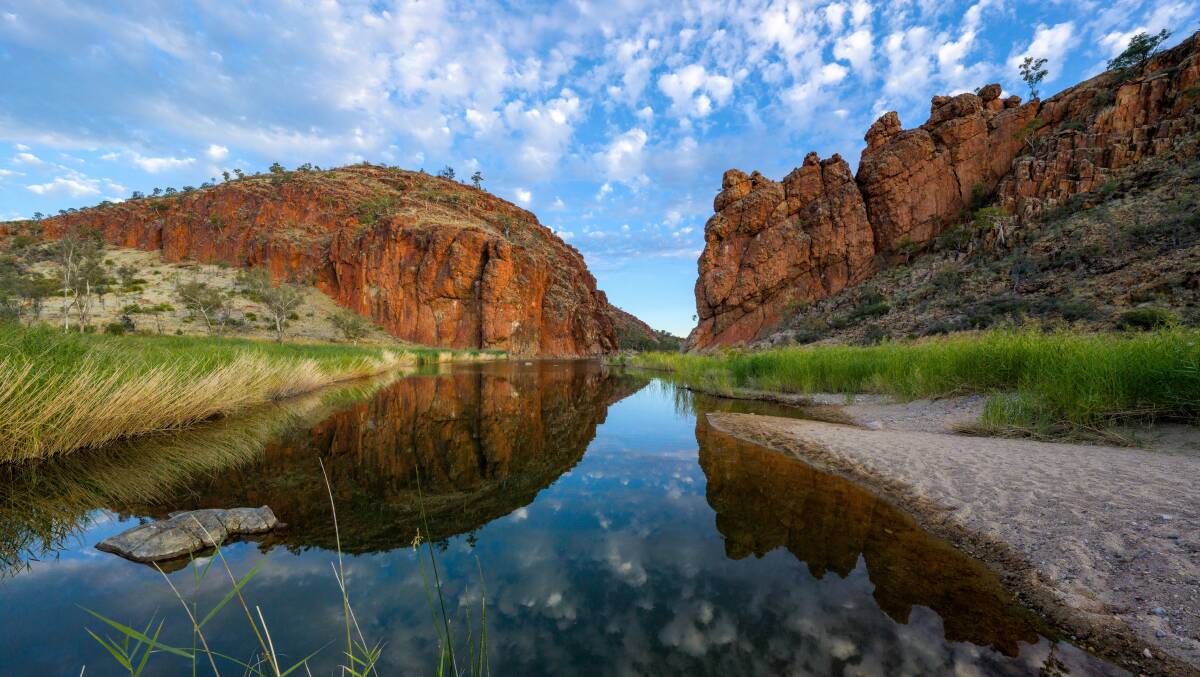
It makes you pause and just ponder in silence over our tiny place on this planet in its millions of years of development.
In front of you lies the seemingly endless terrain of the Red Centre of Australia in its great vastness. It takes the breath away. It takes the speech away, too - you just sit on the rocks and listen to the sound of the silence.
It takes the breath away. It takes the speech away, too.
Or it takes what breath is left after trekking for four hours to the top in pitch darkness with a headlamp to show you only the next step on the rough, ankle-bending surface. The climb starts at three in the morning to reach the top by sunrise at a quarter past seven. It is a tough trek for all but the toughest trekkers.
But three hours in, each heavy step only makes the emerging pink of the light rippling on the clouds even more wondrous. And then the sunlight bursts over the mountains.
Everyone has a bucket list. The Taj Mahal. The canyons of Manhattan. But the sunrise seen on the Larapinta Trail in the Northern Territory of Australia is a sight as wonderful as any of them. It really is awesome.
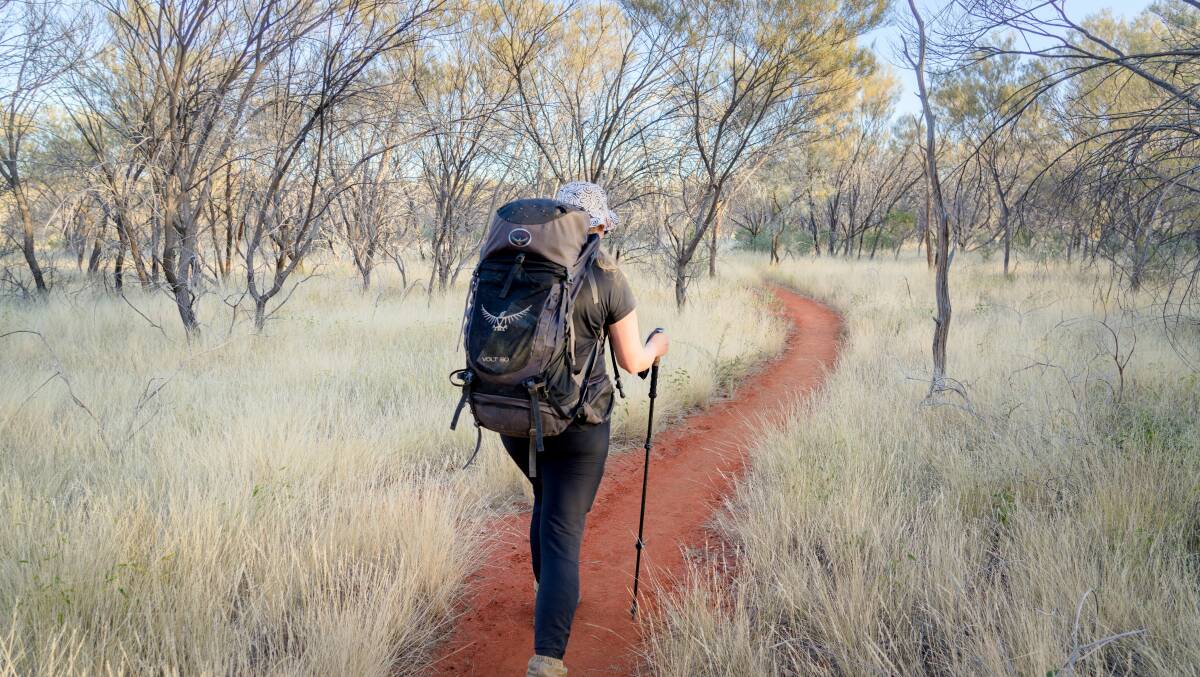
All about the trail
The Larapinta Trail is in West MacDonnell National Park (Tjoritja, as the Aranda people refer to the West MacDonnell Ranges). It stretches west to east for 223 kilometres, with Mount Sonder (1379 metres) at the western end. The lowest point on the whole trail is Alice Springs Telegraph Station. A lot of the trail is high, along the ridges of the MacDonnell, Chewings and Heavitree ranges.
For the purposes of trekking, the Larapinta Trail is divided into 12 sections, with trailheads between each. Five of those trailheads can only be accessed on four-wheel-drive vehicles. All of the trailheads have water tanks. And you will need water to avoid dehydration (three litres a day is the recommendation).
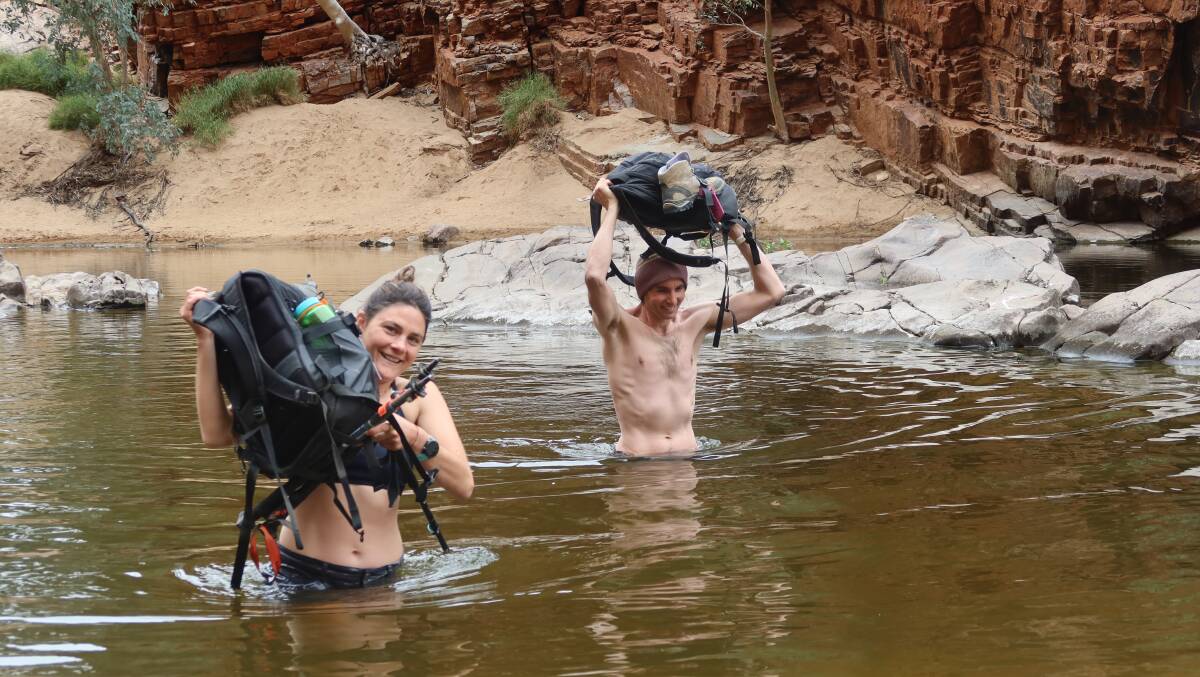
The Larapinta Trail is what trekkers call "type 2 fun". The enjoyment comes after the scrambling and walking. The hard slog is often a very hard slog. It is not for casual walkers. It is for people who are fit - not marathon fit but serious walking fit. If your only exercise is the walk from the car to a chair, don't try it.
Having said that, I'm in my late 60s. I'm not a couch potato but I'm not a fitness fiend, either. I don't go to the gym. My previous idea of a good walk was an hour or two on the flat path round Lake Burley Griffin in Canberra.
On the Larapinta Trail, I walked for three days, eight hours a day. It was tough - very tough in parts. The slopes can be steep - steep enough for scrambling up or down but not so steep as to demand mountaineering skills. Vertigo rarely kicked in. At the end of one day, I could barely walk. I lost my balance a few times because my legs had turned to jelly.
There were other trials like wading across a river with a backpack held above water and boots tied around my neck. Losing balance on the uneven surface of the riverbed would not have been good.
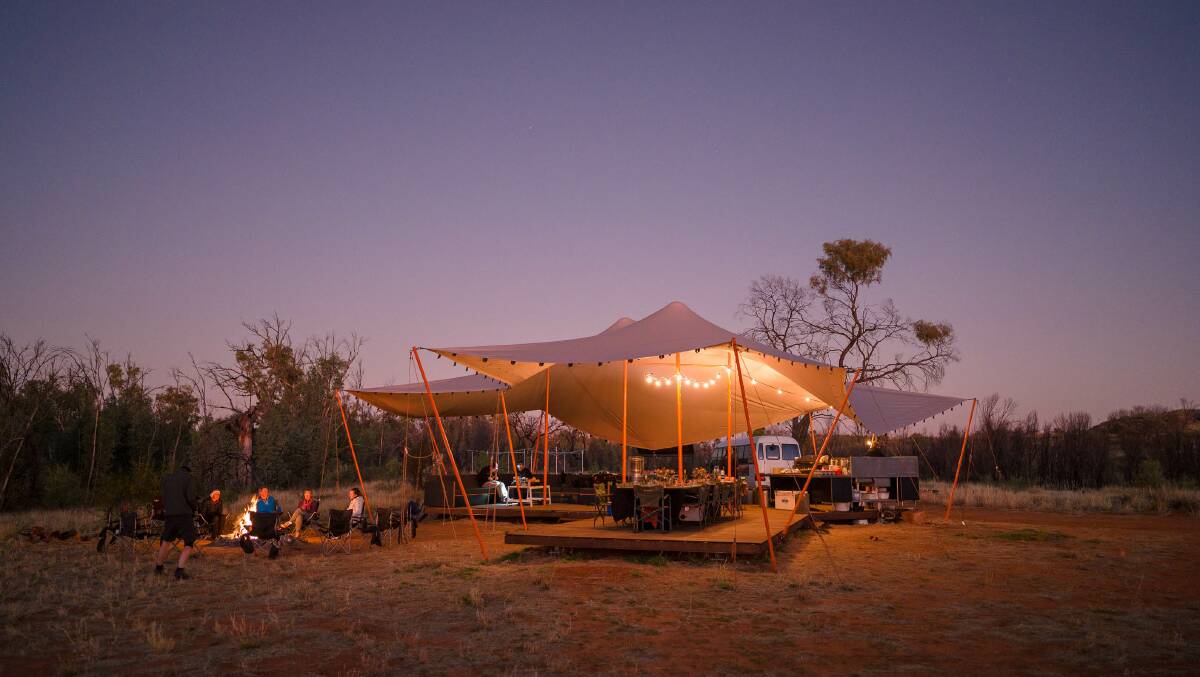
But the whole experience was fabulous - one of the best of my life. I would even say it was life-changing, exposing the limits of my body, but also telling me that what I had previously thought were the limits when I did city walks were actually well within my capabilities. Age had not withered my muscles but a lack of exercise had.
The longest section of the trail is Section 9 at nearly 29 kilometres - but the stated distance doesn't tell you much because of the steep gradients. The guides reckon Section 9 can be done in 12 hours, including time to see the spectacular views from the top of Mount Giles (1389 metres - about 10 metres higher than Mount Sonder.)
I'm not so sure about 12 hours. It obviously depends on fitness. "Hard: suitable for experienced walkers," is the official description.
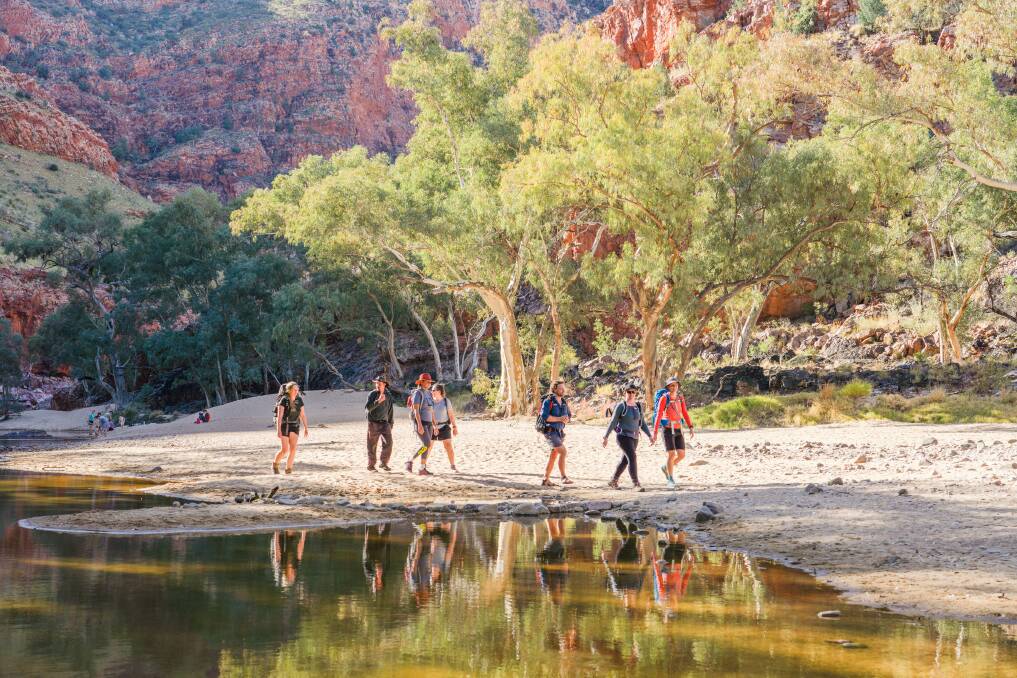
The shortest section of the trail is Section 10 at nine kilometres and a doable four hours. In between are sections of different degrees of difficulty.
The official advice is that the whole trail can be walked in just over two weeks: "It is one of Australia's best long-distance treks which can be completed comfortably over a 15- to 16-day period, but the duration will vary based on your level of fitness and time constraints."
Walking is best done in winter. Summer would be unbearable and probably dangerous. Even in winter temperatures range widely through the day - from just above freezing at night to 22 degrees in the day when I did it.
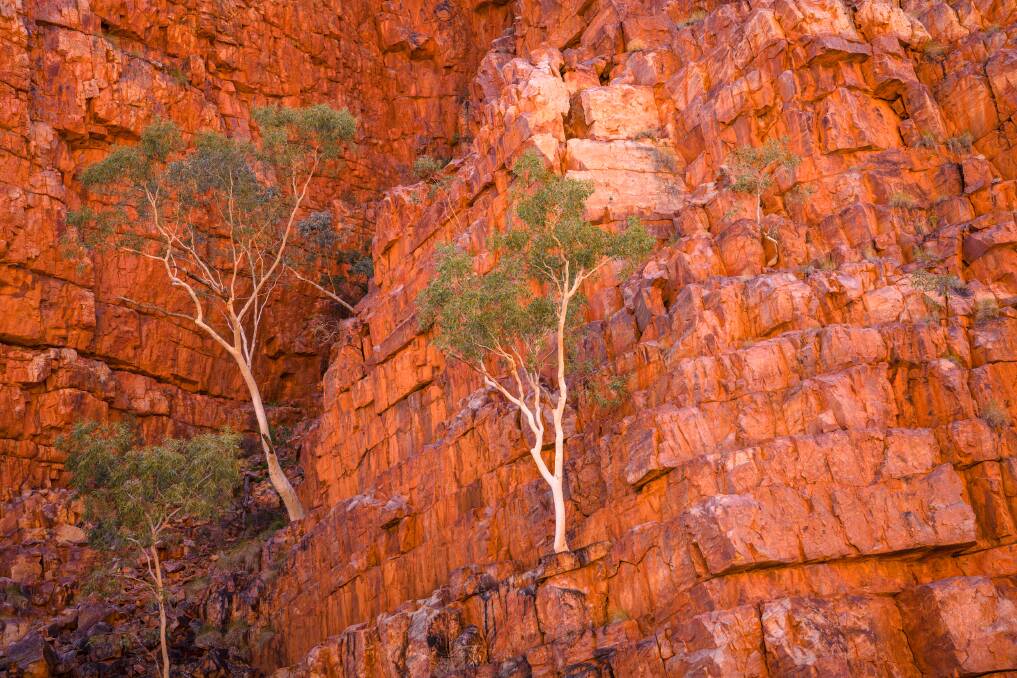
So what's it like?
Hard but a great experience, I'd say. I went with World Expeditions, who describe some of their treks on the Larapinta Trail as "in comfort" which is sort of true. It's not the Four Seasons (the Four Seasons doesn't have drop toilets) but it's not Burke and Wills either.
It's not the Four Seasons but it's not Burke and Wills either.
Along the trail, the company has a string of their own semi-permanent campsites. These circles of tents offer some comfort at the end of the hard trek. Main packs are transported to the next site each day so trekkers carry only what they need on the day's trek. This load is not negligible. It includes three litres of water and the layers of clothes you need. Height brings wind and cold.
The camp sites are small and isolated so you experience the bush and its sounds and smells. Trekkers stay under canvas on camp beds, with the option of taking the bed and a swag out under the amazing stars. There's a central tent for dining and socialising. Showers are private - closed off by tarpaulin sheets - but outdoors. Water is hot from a gas heater (known for some reason as a donkey). The toilets are drop toilets.
But above all, the food is excellent. The organisers take the view that hard trekking demands softer treatment at the beginning and end of the day. And that primarily means good food.
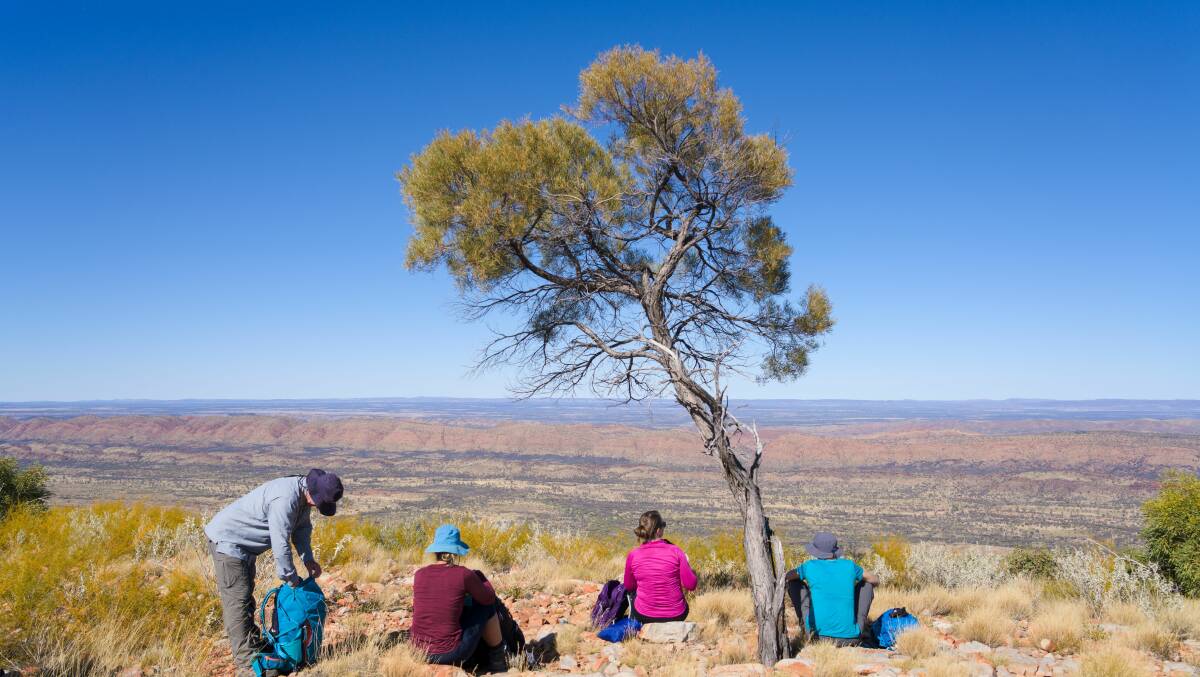
Breakfasts were what breakfasts should be: scrambled eggs and bacon; grilled haloumi cheese; an abundance of raw fruit and fruit toast; toasted bagels with cream cheese and smoked salmon. Good coffee and good tea.
Dinners were what dinners should be: lamb roasted in a camp oven; barramundi done in tin foil on a barbecue; an abundance of vegetables roasted in a camp oven; apple crumble cooked in a camp over, with custard; pavlova. Good wine and good beer - big-bodied shiraz; pinot gris from the Adelaide Hills and excellent ales from the Alice Springs Brewing Company.
There is attention to important detail. The white wine and the beer are chilled. The wine glasses are good wine glasses, with fine, thin glass (you may not think that's important but I do - a good drink needs the right glass).

And it is all in an amazing atmosphere. There is nothing quite like hearing the silence at dawn in the heart of the bush in outback Australia, with that silence suddenly broken by a dawn chorus as the sun breaks in pink across the clouds. Or hearing an owl screeching at night.
Despite the wonderful silence, it is not, of course, true that the land is empty. Indigenous people have occupied it for millennia.
One evening, an Indigenous entrepreneur gave a talk about local bush foods. Rayleen Brown has a business - Kungkas Can Cook - collecting, marketing and cooking with herbs, fruits and roots which she said had "been enjoyed by Aboriginal communities for over 60,000 years. We have shortened the supply chain so that local women harvesters benefit from every purchase."
Arrernte elder, Kumalie (Rosalie) Riley, gave a talk about the traditions and experiences of her people. Her pride and quiet anger shone out as she stood in the shadow of Simpsons Gap and talked about the Stolen Generation when children were taken from their families - taken from her family.
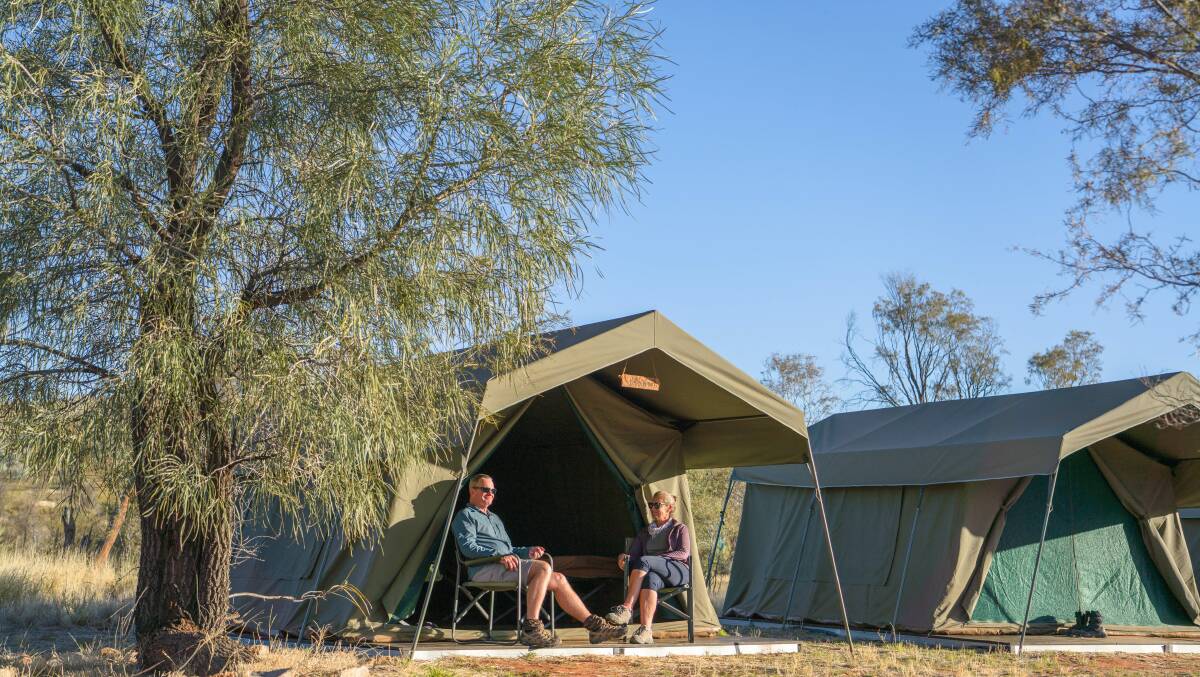
Sense of achievement
This level of trekking may be type 2 fun - but it is fun, albeit in a delayed gratification kind of way. It demands fitness and the right gear - good boots, trekking poles, layers of clothes for different conditions.
Part of the fun is in the pleasure of achievement - completing a strenuous hike - but part of the fun is in the journey itself: the gazing in wonder at plants which somehow survive in the harshest environment (like ghost gum growing out of sheer cliff faces).

And there is the enjoyment of adventure in the ancient, awesome and thought-provoking terrain - an experience that is sure to stay with a person forever.
Read more on Explore:
SNAPSHOT
World Expeditions offers a range of treks of different lengths and difficulty, from the three-day Larapinta Experience in Comfort with some less tough walks (from $2095) and the Classic Larapinta Trek in Comfort over six days ($3785) to the Best of the Larapinta Trail over nine days ($4695) and the Larapinta End to End, the full 223 kilometres over 14 days ($5695). The trip the writer went on was over five days, with three full days of trekking and two half days at each end, to be met in Alice Springs and transported to the Larapinta Trail, and then back on the last day. worldexpeditions.com
The writer was a guest of World Expeditions.
Pictures: Luke Tscharke; Steve Evans





